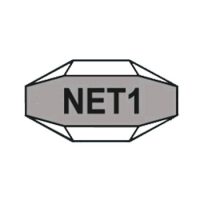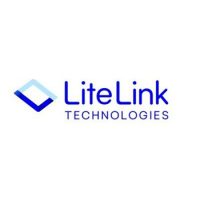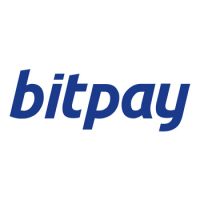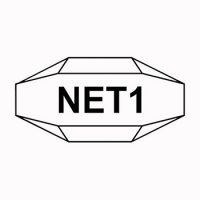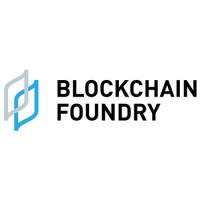Blockchain Press Releases
ZTE CEO Xu Ziyang: Convergence and Innovation – Build Phygital DNA for Faster Growth
- ZTE aims to build a Phygital DNA for faster iteration and innovation, ultimately reshaping society as a whole
- ZTE seeks concerted efforts for faster breakthroughs in terms of optimum efficiency, upgraded capability, as well as intelligent and simplified application
- During the MWC Shanghai, ZTE’s CEO Xu Ziyang was granted the Outstanding Contribution to the Asia Mobile Industry Award at GSMA’s Asian Mobile Awards (AMO) 2022
SHANGHAI, June 28, 2023 /PRNewswire/ — ZTE Corporation (0763.HK / 000063.SZ), a global leading provider of information and communication technology solutions, announced today that the company’s CEO, Xu Ziyang, delivered keynote speeches at the “Digital First Networks” session and the GTI Summit Shanghai. During his speeches, Mr. Xu shared ZTE’s insights and practices in this digital era.
During the “Digital First Networks” session, Mr. Xu pointed out that, due to various uncertainties, there may be a limited window of opportunity for the digital transformation of industries. This situation entails greater responsibilities and higher pressure. Against this backdrop, ZTE focuses on key underlying technologies, infrastructure, and applications while promoting the integration of physical and digital realms, convergence of computing and networking, and increased efficiency in production and transactions. By doing so, the company aims to build a Phygital DNA for faster iteration and innovation, ultimately reshaping society as a whole.
At the GTI Summit Shanghai 2023, Mr. Xu highlighted ZTE’s insights and practices in the digital industry. According to Mr. Xu, the digital infrastructure in China, especially dual-gigabit networks and computing power, has developed into a mature phase. To seize the opportunities for a leap forward, ZTE seeks concerted efforts for faster breakthroughs in terms of optimum efficiency, upgraded capability, and intelligent and simplified application. As stressed by Mr. Xu, only by pursuing excellence even when tackling the hardest challenges can the company grow stronger with vitality.
During the MWC Shanghai, Mr. Xu was granted the Outstanding Contribution to the Asia Mobile Industry Award at GSMA’s Asian Mobile Awards (AMO) 2022. The award recognizes Mr. Xu’s outstanding leadership in driving ZTE to continuously promote industrial innovation, enhance cross-industry collaboration, and boost the development of the global mobile industry.
Below is the original text of Xu Ziyang’s speech titled “Convergence and Innovation – Build Phygital DNA for Faster Growth”:
Currently, the digital infrastructure in China, especially dual-gigabit networks and computing power, has developed into a mature phase. Consumers are shifting from voice and data communications to intelligent and integrated information services tailored to specific scenarios, such as Fiber to the Room (FTTR), intelligent cockpits, virtual-real fusion, and low-altitude economy. In addition, industrial digitalization has entered a crucial stage, with problems emerging from both the demand and supply sides. For example, on the demand side, there are difficulties in service integration, high management costs, and barriers to service innovations. On the supply side, how can we strike a balance between high requirements and low costs, fragmented scenarios and large-scale application, as well as heavy investments and slow monetization? The good news is, driven by such problems, we are finding a way out with technological breakthroughs and collaboration. ICT is iterating at a fast pace, with significant technological innovations occurring frequently, such as 5G-Advanced, 6G, FTTR, 400G OTN, heterogeneous computing, and modern data centers.
This is an era of data explosion, with ubiquitous but distinct requirements for data processing and circulation. As you know, ChatGPT is a heated product that has triggered the AIGC boom globally. Also, challenges are posed in addressing the slowdown of Moore’s Law, closing the gap to the Shannon Limit, pursuing green and sustainable growth, and guaranteeing digital security. Against this backdrop, ZTE focuses on key underlying technologies, infrastructure, and applications, and promotes physical-digital integration, Computing and Network Convergence (CNC), and higher efficiency of production and transaction. By doing so, we aim to build phygital DNA for faster iteration and innovation, ultimately reshaping the entire society.
As for key underlying technologies, the top priority is to achieve breakthroughs in terms of chipset, component and material, and algorithm and architecture. They are the foundation of innovation, and decide how far we can go in capability and efficiency improvement, as well as boundary extension and technology integration. In this respect, ZTE is taking firm steps and making consistent efforts, to pursue excellence even when tackling the hardest challenges.
Just like the brain of a human being or the engine of a car, chipsets are one of the most essential underlying technologies, which directly affect the performance, integration, and Power Usage Effectiveness (PUE) of a product. In other major fields such as computing facilities, 5G, data center switches, and terminals, there are higher expectations and requirements. Hence, we have made innovations and breakthroughs by taking various measures. For instance, advanced processes are adopted, and innovations are made in Domain-Specific Architecture (DSA), packaging, and systemic design, to prolong the Moore’s Law. Also, we introduce heterogeneous computing to match different scenarios, and therefore enhance performance and efficiency. Moreover, we achieve hardware acceleration based on DPUs and smart NICs, to constantly promote the co-optimization of software and hardware.
Innovations in components and materials, such as new power amplifiers, filters, antenna elements, and heat dissipation design, can also create huge value. Take power amplifiers as an example. Based on ETSI’s standard for measuring power consumption, with a 1% increase in power amplifier efficiency, the overall equipment PUE will rise by 1-2%, which will make possible larger bandwidth and greater transmit power of base stations. With continuous efforts in this field, ZTE has achieved a power amplifier efficiency 8% higher than the industry average. Also, we use flexible, optical backplanes for 32-dimensional Optical Cross-Connects (OXCs) to simplify equipment architecture while greatly enhancing network capacity and performance. To extend the range and reduce the penetration loss of millimeter wave, ZTE has used Reconfigurable Intelligent Surface (RIS), to significantly improve coverage, user experience, and deployment efficiency.
Regarding algorithm and architecture, ZTE’s 5G PowerPilot solution enables the energy saving of wireless networks by 35%, and this will reduce the power consumption of a single site to as low as 5 watts in sleep mode. Based on the algorithm for dynamic collaboration between base stations and RIS, our Dynamic RIS solution increases the millimeter wave coverage by 30% and the average downlink rate by six times. What’s more, our distributed database solution, GoldenDB, can raise the performance and capacity of databases tenfold, and save 70% of investments via the decoupling of hardware and software.
For infrastructure and capability enhancement, the key lies in the network, computing power, and the convergence of computing and network.
To enhance network performance, ZTE is dedicated to providing groundbreaking products and solutions.
The upgraded UniSite solution integrates lightweight devices such as the UBR series, A+P series, and broadband antennas, making it easy to deploy multi-mode and multi-band sites.
The 5G TSN solution provides deterministic connectivity with “five 9s” availability, guaranteeing a latency of less than 5 milliseconds and a jitter within microseconds in industrial scenarios.
Our SBFD system has increased the uplink throughput to over 1.4 Gbps while reducing the end-to-end latency to 4 milliseconds for a single carrier.
Integrated Sensing and Communication (ISAC) base stations have boosted low-altitude economy and made smart transportation a reality.
Our RedCap technology fulfills the needs of medium- and high-speed IoT scenarios at a lower cost, greatly broadening the application scope of 5G.
The 400G OTN solution enables ultra-long-haul transmission, building the optical infrastructure for China’s East-to-West Computing Resource Transfer Project.
The FTTR solution provides a whole-home gigabit-plus broadband experience for every household.
On the way to level-4 autonomous networks, we are using digital twins to create mixed reality experiences and building intent-based networks for human-machine coordination, achieving end-to-end processing within seconds and closed-loop O&M across domains with self-X capabilities.
As for computing power infrastructure, ZTE provides a full range of server and storage products, including general-purpose servers, GPU servers/intelligent computing clusters, liquid-cooled servers, and all-flash and hybrid flash storage products. Cold plate liquid cooling is applied to further reduce power consumption. Indirect evaporative cooling, extreme liquid cooling, and AI-driven management reduce the PUE of our modern data centers to 1.13. With TECS Cloud Foundation (TCF), the distributed precision cloud, computing resources are pulled from cloud, edge, and terminal levels to enable multi-service deployment and on-demand scheduling.
In terms of CNC and CPN, ZTE has developed a one-stop ICT solution integrating edge cloud. It features an IaaS/PaaS cloud technology stack, and supports heterogeneous computing as well as the unified planning, building, and O&M of ICT infrastructure. As such, this solution has provided practical guidance for the evolution from edge computing to computing power networks.
Also, we actively explore computing and network synergy to build a bridge between the application layer and the network layer, so that the network can sense service demands and computing power resources, implement computing power routing, and realize on-demand scheduling across multiple resource pools.
In addition, ZTE is building an orchestration center featuring unified and open APIs. It enables flexible management in multi-vendor and multi-cloud environments, and ensures quality services that integrate “connectivity, computing, and digital capabilities”. In this way, we not only unlock new opportunities, but also empower the digital transformation of various industries in an agile and cost-effective manner.
As industrial digitalization accelerates, we see higher production and transaction efficiency.
ZTE keeps working to improve production efficiency for its partners.
In the smart steelmaking plant of Ansteel, our URLLC technology for remote control of machinery has been adopted on overhead cranes, achieving “five 9s” availability, a 100% increase in production efficiency, and a 20% reduction in labor costs.
In the smart factory of Benxi Tool, we have provided AI-powered machine vision, improving quality inspection precision to two microns, and reducing costs by 15%.
AGV-based warehousing and logistics have made flexibility and lean management a reality. For example, we have helped Gree improve the warehouse automation rate to 60%, and shortened the changeover time to less than two days. In the smart factory of JA Solar, AGVs are deployed for the automated distribution of silicon around the clock.
With situational awareness based on digital twins, we have improved the management of onsite personnel and security for Wonfull Petrochemical.
To improve transaction efficiency and convert it into market value, we empower full-process operation with digital technology, that is, to remove information silos, and enable end-to-end data interconnection and intelligent analysis and matching.
Working with China Telecom Sichuan, ZTE has launched the 5G+ intelligent supply chain demonstration project. By integrating the technologies such as automatic sorting, AGVs, and RFID labels, we customized a digital distribution system, which features one-stop purchase, direct-to-store service, industry collaboration, and a streamlined structure. With this system, the delivery efficiency is increased by 50%, and inventory is reduced by 1/3.
At Tianjin Port, we have enabled remote quay control, automated driving of container trucks, 5G intelligent tallying as well as intelligent on-demand stacking, quality grading, and real-time sorting of goods. Through such efforts, the overall operation efficiency is increased by 20%.
Working with China Southern Power Grid, we have connected grid control and detection nodes on a large-scale 5G network and realized high-frequency collection of power consumption data over broadband networks in real time. This solution has not only enabled smart power consumption and electrical safety, but also increased power distribution efficiency by 2.7 times and accelerated access to green energy.
To better adapt to more diversified and fast-evolving scenarios, we have recently released ZTE Digital Nebula 2.0. With a unified architecture and scalable design, this solution can improve adaptability to multiple industries, unlocking greater potential and further enhancing production and transaction efficiency. Finally, it will help various industries achieve data-driven efficiency improvement, build flexibility through cross-domain collaboration, and boost trust based on openness and transparency.
Phygital DNA will ultimately contribute to a more prosperous human society. With a scientific mindset and human-centric spirit, ZTE leverages digital infrastructure and AI to catalyze and boost sustainable growth for good. Specifically,
- By promoting digital inclusion, we help close the digital divide across the globe and ensure a fair distribution of social resources.
- With digital capabilities, we strive to build knowledge graphs for the entire human society, so as to make our cultures stay alive.
- With innovative technologies, we are committed to achieving more balanced, green, and low-carbon development together with global partners.
We firmly believe that human civilization and technology will complement each other and lead us to a better tomorrow.
In such an unprecedented era, we are all witnessing and enabling historic changes. As a digital native company, ZTE is dedicated to full-stack, all-domain, and full-cycle DICT innovations. As a driver of digital economy, we will always adhere to the business philosophy of “Simplicity, Agility, and Openness for Win-Win”. Together with operators as well as industry and ecosystem partners, we aim to build a digital and intelligent ecosystem for shared success, and will always play our part in promoting sustainable development.
Thank you.
ABOUT ZTE:
ZTE helps to connect the world with continuous innovation for a better future. The company provides innovative technologies and integrated solutions, its portfolio spans all series of wireless, wireline, devices and professional telecommunications services. Serving over a quarter of the global population, ZTE is dedicated to creating a digital and intelligent ecosystem, and enabling connectivity and trust everywhere. ZTE is listed on both the Hong Kong and Shenzhen Stock Exchanges. www.zte.com.cn/global
FOLLOW US:
Facebook www.facebook.com/ZTECorp
Twitter www.twitter.com/ZTEPress
LinkedIn www.linkedin.com/company/zte
YouTube www.youtube.com/@ZTECorporation
MEDIA INQUIRIES:
ZTE Corporation
Communications
Email: [email protected]
View original content:https://www.prnewswire.co.uk/news-releases/zte-ceo-xu-ziyang-convergence-and-innovation—build-phygital-dna-for-faster-growth-301865794.html
Blockchain
Blocks & Headlines: Today in Blockchain – May 30, 2025 (Fraser Edwards, Kyiv NFT, Spirit Blockchain Capital, Indian eHealth, Hedera)

Blockchain technology and cryptocurrencies continue to redefine industries—from competitive gaming and cultural heritage preservation to corporate finance, healthcare, and alternative tokens. Today’s briefing highlights five pivotal developments shaping the ecosystem: Fraser Edwards’s vision for trust in eSports; Ukraine’s wartime cultural preservation via NFTs; Spirit Blockchain Capital’s Q1 2025 operational report; India’s push for blockchain-enabled electronic health records (EHRs); and the rise of viral altcoins such as UniLabs, Sui, and Hedera Hashgraph. Together, these stories illustrate the themes of trust and identity, preservation and provenance, institutional maturation, public-sector innovation, and token diversification. In this op-ed–style round-up, we distill the essence of each story, cite sources, and offer analysis on how they advance Web3, DeFi, and NFT frontiers.
1. Rebuilding Trust in eSports: Can Blockchain Fix Competitive Integrity?
Source: CCN
Summary:
In a recent CCN interview, veteran trader and eSports investor Fraser Edwards argues that blockchain’s immutable ledgers can restore credibility in the rapidly commercializing world of competitive gaming. According to Edwards, match-fixing scandals and opaque prize-pool distributions have eroded fan confidence. By tokenizing tournament entries and payouts on public blockchains—complete with smart-contract–enforced escrow—organizers can guarantee that prize monies are distributed exactly as advertised, and that no post-match manipulation occurs. Tournament operators in Asia and North America are already piloting Ethereum-based payout dApps, aiming to increase transparency for players and sponsors alike.
Key details & analysis:
-
Smart-contract escrow: Funds are held in a time-locked contract that releases prize money only upon verifiable match results. This prevents disputes over referee decisions or delayed payments.
-
On-chain reputation: Player and team reputations can be tokenized via non-fungible reputation badges that accrue based on fair play and community votes—discouraging cheating.
-
Scalability concerns: High-traffic tournaments may require Layer 2 rollups or alternative chains (e.g., Polygon, Immutable X) to reduce gas costs and latency.
Opinion: Blockchain’s dual promise of provable fairness and programmable finance makes it uniquely suited to eSports. Yet adoption hinges on UX: seamless wallet integrations, minimal transaction fees, and clear regulatory guidance on esports tokens.
2. When Art Meets Blockchain: Ukraine’s Wartime Cultural Preservation
Source: The Kyiv Independent
Summary:
As monuments crumble under artillery fire, Ukrainian curators and technologists are partnering to mint NFTs representing lost or endangered artifacts. The Kyiv Independent reports that the National Art Museum of Ukraine has launched “Project Phoenix,” tokenizing high-resolution 3D scans of sculptures, manuscripts, and paintings. Proceeds from initial sales fund restoration and digital archiving efforts. Each NFT embeds provenance metadata—including GPS coordinates, curator notes, and condition reports—ensuring that future generations can verify authenticity and context, even if the physical artifact is destroyed.
Key details & analysis:
-
Metadata richness: Beyond simple ownership, NFTs store structured metadata—using ERC-721 metadata extensions—that capture curatorial insights and conservation logs.
-
Decentralized archives: IPFS and Arweave are employed to host ultra-high-resolution imagery, with on-chain hashes guaranteeing data integrity.
-
Community engagement: Fractional-NFT drops allow diaspora communities to collectively own tokens, strengthening cultural ties and crowdfunding preservation.
Opinion: Blockchain’s ability to immutable record heritage provides a lifeline for war-torn nations. However, ensuring that local institutions retain governance over metadata edits and future migrations is critical to avoiding “cultural colonialism” by global NFT marketplaces.
3. Spirit Blockchain Capital’s Q1 2025 Highlights: Growth, Investments, and Outlook
Source: GlobeNewswire
Summary:
Spirit Blockchain Capital’s Q1 2025 report benchmarks the firm’s operational milestones and financial performance. Assets under management (AUM) climbed 45% to $1.02 billion, driven by strategic allocations to top-tier Layer 1 and Layer 2 protocols, DeFi liquidity pools, and a newly launched token-index fund. Operating income rose 37%, fueled by management fees and performance incentives. The firm also closed its second blockchain-focused venture fund at $150 million, earmarked for early-stage Web3 projects in gaming, infrastructure, and decentralized identity.
Key details & analysis:
-
Diversification strategy: 60% of AUM in blue-chip cryptocurrencies (Bitcoin, Ethereum); 25% in DeFi (Aave, Uniswap, Lido); 15% in tokenized commodities and NFTs.
-
Fund performance: The flagship fund delivered a 9.8% return in Q1, outperforming the 6.2% benchmark set by the Bloomberg Galaxy Crypto Index.
-
Venture investments: Early stakes in zero-knowledge proof startups and decentralized storage platforms signal confidence in scalability and privacy innovations.
Opinion: Spirit’s robust growth and disciplined diversification mirror institutional maturation in the blockchain asset management space. As regulatory clarity improves, expect further inflows from endowments, pensions, and family offices.
4. Blockchain EHRs in India: The Next Digital Health Revolution
Source: ORF
Summary:
The Observer Research Foundation (ORF) details India’s pioneering pilot of blockchain-backed electronic health records (EHRs) in the state of Andhra Pradesh. By leveraging a permissioned Hyperledger Fabric network, the initiative ensures that patient records—from vaccination histories to diagnostic imaging—are securely shared across hospitals, clinics, and pharmacies. Patients control access via digital identities anchored to India’s Aadhaar system, granting temporal permissions for data viewing and preventing unauthorized sharing.
Key details & analysis:
-
Interoperability: HL7 FHIR standards are mapped to on-chain transactions, enabling seamless data exchange with existing hospital information systems (HIS).
-
Privacy safeguards: Off-chain storage of PHI (Protected Health Information) is encrypted with patient-held keys; only hashed pointers reside on-chain to ensure immutability without exposing sensitive data.
-
Regulatory alignment: The pilot aligns with India’s draft Digital Health Act, which emphasizes data sovereignty and patient consent frameworks.
Opinion: Blockchain EHRs can democratize healthcare access in a populous nation—but success depends on user-friendly portals, robust identity verification, and contingency plans for network outages in rural areas.
5. The Hottest Viral Altcoins of 2025: UniLabs, Sui, and Hedera Lead the Pack
Source: TronWeekly
Summary:
According to TronWeekly, the altcoin landscape in 2025 is dominated by three viral tokens: UniLabs (UNI-L), Sui (SUI), and Hedera Hashgraph (HBAR). UniLabs, a governance token for a decentralized laboratory network, saw a 1,200% year-to-date surge on news of its AI-driven drug-discovery partnership. Sui’s Move-based smart-contract platform gained traction for sub-second finality and low gas fees, with total value locked (TVL) surpassing $2 billion. Hedera’s HBAR continues its enterprise pivot, securing multi-year agreements with global brands for identity verification and supply-chain tracking.
Key details & analysis:
-
UniLabs use case: Token holders vote on research grants and share in royalty revenues from patented compounds developed on-chain.
-
Sui performance: With a novel object model and horizontal sharding, Sui supports over 3,000 TPS (transactions per second) without compromising on decentralization.
-
Hedera enterprise: The Governing Council—comprising Boeing, Google, and LG—bolsters confidence in HBAR’s governance model and paves the way for compliant enterprise deployments.
Opinion: These tokens exemplify the diversification of blockchain applications. Investors should assess not only market hype but also protocol fundamentals—developer activity, economic incentives, and real-world adoption.
Cross-Story Trends & Key Takeaways
-
Trust & Transparency at the Core
From esports prize-pool ledgers to wartime NFT archives and permissioned health records, blockchain’s immutability fosters verifiable trust—a prerequisite for mainstream adoption across sectors. -
Institutional & Public-Sector Innovation
Spirit Blockchain Capital’s fund growth and India’s EHR pilot signal that both private and government entities view blockchain as a strategic infrastructure, not just speculative assets. -
Vertical Specialization Fuels Token Growth
Viral altcoins like UniLabs, Sui, and Hedera thrive by addressing niche use-cases—governance in biotech, scalable DeFi rails, and enterprise identity—underscoring the importance of purpose-built protocols. -
Metadata & Provenance Drive NFTs Beyond Art
Ukraine’s cultural NFTs demonstrate how rich on-chain metadata can preserve heritage, while esports applications show that reputation tokens can enforce fair-play credentials. -
Ecosystem Maturation Requires UX & Governance
Across all stories, user experience—wallet onboarding, identity verification, metadata curation—and robust governance frameworks (tokenomics, regulatory alignment) emerge as decisive factors in blockchain’s next wave.
Conclusion
Today’s blockchain headlines reveal a maturing ecosystem where trust, transparency, and targeted innovation unlock new frontiers—from safeguarding digital heritage amid conflict to revolutionizing healthcare and sports. As institutional players allocate billions, and public-sector pilots chart regulatory pathways, the fate of tomorrow’s Web3 landscape hinges on seamless UX, rigorous governance, and demonstrable real-world utility. Stay tuned for tomorrow’s Blocks & Headlines, where we’ll continue tracking the trends, tokens, and technologies that define the blockchain revolution.
The post Blocks & Headlines: Today in Blockchain – May 30, 2025 (Fraser Edwards, Kyiv NFT, Spirit Blockchain Capital, Indian eHealth, Hedera) appeared first on News, Events, Advertising Options.
Blockchain Press Releases
Bybit Earnival Unlocks 4 Weeks of Golden Rewards

DUBAI, UAE, May 30, 2025 /PRNewswire/ — Bybit, the world’s second-largest cryptocurrency exchange by trading volume, is excited to raise the stakes for Bybit Earn users in a four-week long rewards program, the Bybit Earnival. From now to June 22, eligible Bybit users may sign up for the event for a chance to earn up to 555% APR and Gold Tokens.
With paradigm shifts taking place in the global investment landscape, Bybit Earn offers a wide range of yield-bearing products catered to the diverse needs of traders. The offerings unlock access to beginner products with guaranteed returns such as flexible staking, advanced savings products at various risk levels, and tokenized real-world assets including XAUT, a digital token backed by physical solid gold.
For four weeks in a row, Bybit users may check into Bybit Earn for a rewarding experience packed with exclusive perks:
- New User Exclusives: Users new to Bybit Earn can enjoy a boost for Fixed Savings products of up to 555% APR on USDT. The offer applies in the first two days after their initial deposit and staking of 100 to 300 USDT.
- Extra APR Savings Products Every Week: Limited-time savings products with highly competitive APRs, starting at 500 USDT in net deposit, are refreshed daily at 6 AM UTC, with new offers launching every Monday at midnight.
- Weekly Leaderboard Prize: Participants who acquire 3,000 USDT or more weekly in eligible Earn products can compete on the weekly leaderboard to win up to 1,000 USDT in Gold Tokens. Rankings update daily, and rewards are distributed within 7–14 days.
The event is open to verified retail customers with Savings service enabled on Bybit to ensure a fair and even level competition.
Bybit Earn is a popular tool for Bybit users to maximize the earning potential of their idle crypto assets on the trading platform. With a focus on consistent yield and regular promotions for higher APR, Bybit Earn is trusted by millions of users on Bybit, the one-stop solution for all their crypto needs.
Terms and conditions apply. For details and eligibility, users may visit Bybit Earnival.
#Bybit / #TheCryptoArk
About Bybit
Bybit is the world’s second-largest cryptocurrency exchange by trading volume, serving a global community of over 70 million users. Founded in 2018, Bybit is redefining openness in the decentralized world by creating a simpler, open and equal ecosystem for everyone. With a strong focus on Web3, Bybit partners strategically with leading blockchain protocols to provide robust infrastructure and drive on-chain innovation. Renowned for its secure custody, diverse marketplaces, intuitive user experience, and advanced blockchain tools, Bybit bridges the gap between TradFi and DeFi, empowering builders, creators, and enthusiasts to unlock the full potential of Web3. Discover the future of decentralized finance at Bybit.com.
For more details about Bybit, please visit Bybit Press
For media inquiries, please contact: [email protected]
For updates, please follow: Bybit’s Communities and Social Media
Discord | Facebook | Instagram | LinkedIn | Reddit | Telegram | TikTok | X | Youtube
Logo – https://mma.prnewswire.com/media/2267288/Logo.jpg
![]() View original content:https://www.prnewswire.co.uk/news-releases/bybit-earnival-unlocks-4-weeks-of-golden-rewards-302469497.html
View original content:https://www.prnewswire.co.uk/news-releases/bybit-earnival-unlocks-4-weeks-of-golden-rewards-302469497.html

Blockchain
Blocks & Headlines: Today in Blockchain – May 29, 2025 (Vaulta, Fosun, Signing Day Sports, Credit Unions, Gaming Innovations)

Welcome to Blocks & Headlines, your definitive daily briefing on the latest blockchain breakthroughs, cryptocurrency developments, and Web3 innovations. In today’s edition—May 29, 2025—we explore five pivotal stories shaping the decentralized economy:
- FT Analysis: Crypto Regulation and Institutional Adoption
- Signing Day Sports Seals Deal with Blockchain Digital Infrastructure
- Vaulta & Fosun Partner to Power Hong Kong’s Blockchain Backbone
- Transforming Online Gaming: Blockchain’s Next Frontier
- Credit Unions Embrace Blockchain for Trustworthy Financial Services
This op-ed–style roundup delivers concise yet insightful coverage, critical analysis, and expert opinion on each development’s relevance within the broader blockchain and cryptocurrency ecosystem.
1. FT Analysis: Crypto Regulation and Institutional Adoption
Overview. The Financial Times reports on evolving global regulatory landscapes and their impact on institutional cryptocurrency adoption. FT highlights how major funds and asset managers navigate compliance frameworks in the US, EU, and Asia to integrate digital assets into traditional portfolios.
Source: Financial Times
Detailed Analysis. As regulators across jurisdictions craft tailored guidelines—from MiCA in Europe to the SEC’s evolving crypto classifications in the US—institutions face a balancing act between innovation and compliance:
- MiCA’s Market Integrity Measures: New EU rules mandate clear disclosures for stablecoin issuers and exchange operators, raising the bar for consumer protection.
- SEC’s Custody Interpretations: Emerging guidance on digital asset custody models, including qualified custodians versus self-custody frameworks.
- Asia’s Sandbox Approaches: Hong Kong and Singapore expand sandbox programs, offering controlled environments for DeFi and tokenization trials.
Opinion. Regulatory clarity is the linchpin for institutional inflows. While stringent frameworks may seem burdensome, they ultimately foster market confidence and prevent systemic risks. Asset managers should proactively engage with policymakers, leveraging sandbox insights to shape pragmatic, innovation-friendly regulations.
2. Signing Day Sports Seals Deal with Blockchain Digital Infrastructure
Overview. According to TradingView’s Reuters feed, Signing Day Sports has executed a definitive agreement to acquire Blockchain Digital Infrastructure, a profitable data-hosting specialist serving DeFi and NFT platforms.
Source: Reuters via TradingView
Detailed Analysis. The acquisition underscores the rising value of specialized blockchain infrastructure:
- Scalable Data Nodes: Blockchain Digital Infrastructure operates 150+ high-throughput nodes, ensuring low-latency data delivery for real-time sports NFT drops.
- Profitability Metrics: The company reported $32 million in EBITDA last fiscal year, highlighting sustainable revenue in a niche market.
- Strategic Synergies: Signing Day Sports plans to integrate hosted nodes into its upcoming sports collectibles marketplace, guaranteeing seamless token minting during high-traffic events.
Opinion. In Web3, infrastructure is the invisible backbone. For NFT marketplaces and DeFi protocols, node reliability and data throughput directly impact user experience—and ultimately, revenue. This move positions Signing Day Sports to compete at scale, setting a precedent for vertical integration in blockchain hosting.
3. Vaulta & Fosun Partner to Power Hong Kong’s Blockchain Backbone
Overview. Coindesk reports that Vaulta, a leading digital asset platform, is teaming up with Fosun International to develop blockchain infrastructure for Hong Kong’s emerging crypto hub.
Source: CoinDesk
Detailed Analysis. The collaboration aims to build secure, high-performance rails for trading, custody, and tokenization:
- Layer-1 Interoperability: Joint development of a cross-chain protocol connecting Ethereum, Binance Smart Chain, and local DLT frameworks.
- Institutional Custody Solutions: Licensed trust entities under Fosun’s umbrella will offer insured cold-storage services for professional investors.
- Regulatory Cooperation: Partnership includes a liaison with the Hong Kong SFC to ensure compliance with the new Virtual Assets Service Provider (VASP) regime.
Opinion. Asia remains a hotbed for blockchain innovation, but regulatory fragmentation poses hurdles. Vaulta’s alliance with Fosun exemplifies public-private synergy—combining local market expertise, financial strength, and technical know-how to anchor the city’s digital asset ambitions.
4. Transforming Online Gaming: Blockchain’s Next Frontier
Overview. TronWeekly examines how blockchain technologies—especially NFTs and decentralized marketplaces—are redefining online gaming economies.
Source: TronWeekly
Detailed Analysis. Key trends driving gaming’s blockchain revolution:
- Play-to-Earn Economies: Games like Axie Infinity and emergent titles use tokenized rewards and NFT-based assets to create real-world value for players.
- Decentralized Marketplaces: Platforms such as Enjin and Immutable X offer gas-free trading environments for in-game items, enhancing liquidity.
- Cross-Game Asset Portability: Standards like ERC-1155 enable items to move seamlessly between compatible titles, fostering interoperability.
Opinion. Gaming is blockchain’s killer app. Beyond speculative hype, tokenization can democratize game economies, allowing genuine ownership and secondary markets. Developers must, however, tackle scalability and user onboarding frictions—layer-2 solutions and intuitive wallets are essential for mass adoption.
5. Credit Unions Embrace Blockchain for Trustworthy Financial Services
Overview. AP’s business coverage highlights several US credit unions piloting blockchain-based platforms to enhance transaction transparency, reduce settlement times, and cut cross-border remittance fees.
Source: AP News
Detailed Analysis. Examples of credit union blockchain pilots:
- Consortium-Led DLT: A consortium of midwestern credit unions uses a permissioned Hyperledger Fabric network to settle inter-credit-union payments in near real-time.
- Remittance Solutions: Deployment of Stellar-based rails reduces remittance costs by up to 60%, benefiting diaspora communities.
- Member Identity Management: Verifiable credential systems streamline KYC processes, reducing onboarding time from days to hours.
Opinion. As community-focused institutions, credit unions can leverage blockchain to reassert their value proposition—offering cost-effective, transparent services that rival large banks and fintechs. Success will hinge on member education and seamless integration with legacy core banking systems.
Central Themes
Today’s dispatch reveals five core themes:
- Regulatory Engagement: From FT’s analysis to Hong Kong’s VASP regime, clear rules underpin institutional and retail growth.
- Infrastructure Control: Signing Day Sports’ acquisition and Vaulta’s Fosun partnership demonstrate the premium on reliable blockchain rails.
- Economic Innovation: Play-to-earn gaming and credit union pilots show tokenization’s real-world impact.
- Interoperability Focus: Cross-chain protocols and ERC-1155 standards drive seamless Web3 experiences.
- Market Confidence: Institutional adoption and compliance frameworks foster long-term trust.
Conclusion
In today’s Blocks & Headlines, we see blockchain’s evolution from experimental playground to enterprise-grade infrastructure: regulators clarify, institutions invest, communities adopt, and developers innovate. Whether you’re tracking regulatory shifts, infrastructure deals, gaming revolutions, or financial cooperatives, the decentralized ledger continues to reshape industries.
Join us tomorrow for Blocks & Headlines, where we continue to unpack blockchain’s latest breakthroughs—one block at a time.
The post Blocks & Headlines: Today in Blockchain – May 29, 2025 (Vaulta, Fosun, Signing Day Sports, Credit Unions, Gaming Innovations) appeared first on News, Events, Advertising Options.
-

 Blockchain Press Releases3 days ago
Blockchain Press Releases3 days agoRain Expands Support to Solana, Tron, and Stellar, Enabling More Partners to Launch Stablecoin-powered Card Programs
-

 Blockchain Press Releases3 days ago
Blockchain Press Releases3 days agoBybit Secures MiCAR License in Austria, Opens European Headquarters in Vienna with Strategic Expansion Plan
-

 Blockchain Press Releases5 days ago
Blockchain Press Releases5 days agoFlipster Reveals Middle East Expansion Plans and Appoints Regional Leadership to Bolster Crypto Trading
-

 Blockchain Press Releases5 days ago
Blockchain Press Releases5 days agoCoinW Teams Up with Superteam Europe to Conclude Solana Hackathon and Accelerate Web3 Innovation in Europe
-

 Blockchain5 days ago
Blockchain5 days agoBlocks & Headlines: Today in Blockchain – May 27, 2025 Featuring Blockchain.com, Bilal Bin Saqib, XRP Ledger, Unstoppable Domains, ReNEW, MEXC Ventures
-

 Blockchain3 days ago
Blockchain3 days agoBlocks & Headlines: Today in Blockchain – May 29, 2025 (Vaulta, Fosun, Signing Day Sports, Credit Unions, Gaming Innovations)
-

 Blockchain6 days ago
Blockchain6 days agoBlocks & Headlines: Today in Blockchain – May 26, 2025 (Lightchain AI, Cetus Hack, Bilal Bin Saqib, The Blockchain Group)
-

 Blockchain Press Releases6 days ago
Blockchain Press Releases6 days agoAB Charity Foundation X AB Blockchain Join Forces to Advance the Global “Tech for Good” Mission







